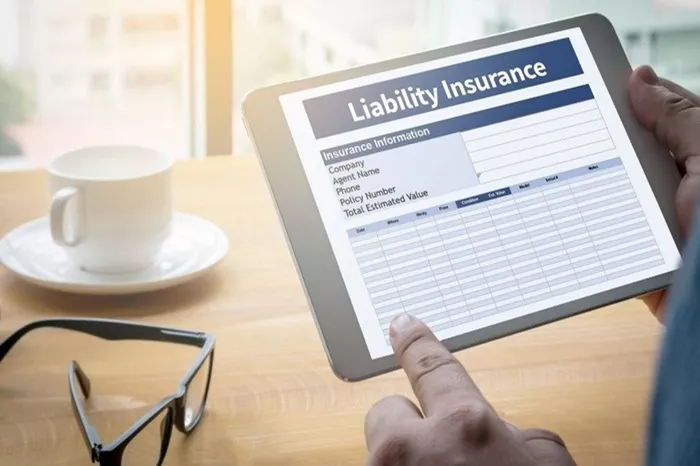Personal property insurance is a crucial component of many homeowners’ and renters’ insurance policies. Understanding what personal property insurance is, how it works, and why it’s important can help you make informed decisions about protecting your possessions. This article delves into the specifics of personal property insurance, offering detailed insights into its coverage, benefits, and the key aspects you need to consider.
Understanding Personal Property Insurance
Personal property insurance is designed to protect your belongings from loss or damage due to various perils, such as fire, theft, or natural disasters. This type of insurance typically covers items within your home, including furniture, electronics, clothing, and other personal items. It is an essential part of both homeowners’ and renters’ insurance policies, providing financial protection and peace of mind.
Coverage Details
Personal property insurance generally covers a wide range of items, but it’s important to understand the specifics of what is included and what may be excluded. Here is an overview of the coverage details:
Covered Items: Personal property insurance typically covers your personal belongings, including clothing, furniture, electronics, and other household items. It also covers valuable items such as jewelry and art, though these may require additional coverage or endorsements.
Perils Covered: Standard personal property insurance policies usually cover common risks like fire, theft, vandalism, and certain natural disasters. However, coverage for specific perils, such as floods or earthquakes, may need to be purchased separately.
Exclusions: Personal property insurance does have limitations and exclusions. For example, damage caused by pests, wear and tear, or intentional acts may not be covered. It’s essential to review your policy to understand these exclusions and consider additional coverage if necessary.
How Personal Property Insurance Works
To better grasp how personal property insurance functions, it’s useful to understand the claims process and how coverage limits are applied:
Filing a Claim: If your belongings are damaged or stolen, you will need to file a claim with your insurance company. The process typically involves documenting the damage or loss, providing evidence of ownership, and working with an adjuster to assess the value of your claim.
Coverage Limits: Personal property insurance policies have coverage limits, which is the maximum amount the insurer will pay for a covered loss. These limits can vary based on the policy and may be subject to sub-limits for specific types of property, such as jewelry or electronics.
Deductibles: Most personal property insurance policies include a deductible, which is the amount you must pay out of pocket before the insurance coverage kicks in. Choosing a higher deductible can lower your premium, but it also means you’ll pay more in the event of a claim.
Benefits of Personal Property Insurance
Personal property insurance offers several key benefits, including:
Financial Protection: In the event of a covered loss, personal property insurance can provide financial compensation for the repair or replacement of your belongings, helping you recover from unexpected events.
Peace of Mind: Knowing that your possessions are protected against various risks can provide peace of mind and reduce stress in the event of a loss.
Additional Living Expenses: Some personal property insurance policies include coverage for additional living expenses if you are temporarily displaced from your home due to a covered loss. This can help cover costs like temporary housing and meals.
Choosing the Right Personal Property Insurance
Selecting the right personal property insurance policy involves evaluating your needs and understanding the available options. Consider the following factors when choosing a policy:
Coverage Amount: Assess the value of your belongings and choose a coverage amount that adequately protects your possessions. It may be helpful to create an inventory of your items and their estimated value.
Policy Type: Personal property insurance can be part of a broader homeowners’ or renters’ insurance policy. Review the terms of these policies to determine if they meet your needs or if you require additional coverage.
Additional Coverage: Depending on the value of certain items, you may need additional coverage or endorsements. For example, high-value jewelry or collectibles may require a separate policy or endorsement to ensure full protection.
See Also: Why Do I Need General Liability Insurance?
Common Misconceptions
Several misconceptions can arise regarding personal property insurance. Addressing these can help you better understand your policy:
Misconception 1: “My policy covers everything.”
One of the most common misconceptions is that personal property insurance covers all types of damage and loss without exception. In reality, no policy covers every possible risk. Most personal property insurance policies have exclusions and limitations that are crucial to understand.
Exclusions: Standard policies typically exclude certain types of damage, such as that caused by pests, wear and tear, or intentional acts. For example, if your home suffers damage from termites or mold, your personal property insurance may not cover these issues. Similarly, if the damage was caused by neglect or poor maintenance, it is unlikely to be covered.
Policy Limits: Even within the coverage limits, there are often caps on specific types of items. For instance, policies may have sub-limits for valuable items like jewelry, art, or electronics. This means that while your personal property insurance covers a broad range of items, there may be restrictions on the amount you can claim for these high-value possessions.
Misconception 2: “Renters’ insurance doesn’t include personal property coverage.”
Another misconception is that renters’ insurance does not provide personal property coverage. In fact, renters’ insurance is specifically designed to protect tenants’ personal belongings.
Coverage Similarities: Renters’ insurance typically includes coverage for personal property loss or damage caused by perils such as fire, theft, or vandalism, much like homeowners’ insurance. This coverage helps protect the renter’s belongings within the rented property.
Policy Variations: The extent of coverage may vary based on the policy, so it’s essential for renters to review their policy details. Renters should ensure their insurance adequately covers their personal property and consider additional coverage for high-value items if necessary.
Misconception 3: “I don’t need personal property insurance if I have a high deductible.”
Some people believe that having a high deductible means they don’t need personal property insurance, but this is a misunderstanding of how insurance works.
Role of Deductibles: A high deductible is a strategy to lower your insurance premium, but it doesn’t negate the need for coverage. The deductible is the amount you pay out of pocket before insurance kicks in, not a replacement for insurance itself. Personal property insurance is crucial for protecting your belongings, regardless of the deductible amount.
Financial Impact: While a high deductible reduces your premium, it also means you’ll pay more out of pocket when you file a claim. Personal property insurance provides a financial safety net for replacing or repairing your belongings after a covered loss, which can be essential, especially if a significant loss occurs.
Conclusion
Personal property insurance is a vital aspect of protecting your belongings from unexpected events. By understanding the coverage details, benefits, and common misconceptions, you can make informed decisions about your insurance needs. Whether you have homeowners’ or renters’ insurance, ensuring that you have adequate personal property coverage can provide peace of mind and financial protection for your valuable possessions.






















